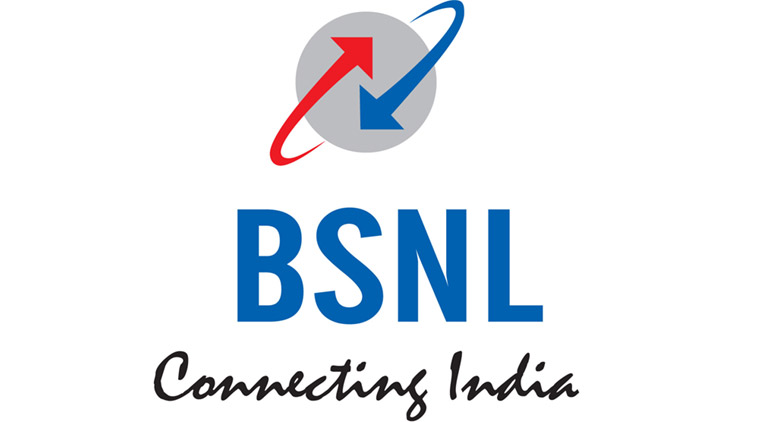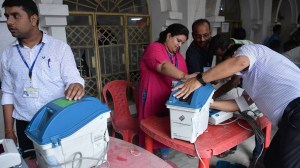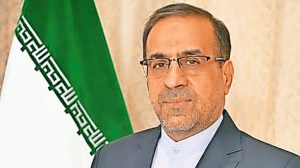- India
- International
Govt readies plan for second wave of asset monetisation
The inter-ministerial committee has discussed hiving off the pipeline and tower businesses of GAIL and BSNL, for second wave of asset monetisation respectively, and leasing them out to private players.
 On list: BSNL, GAIL, state bank assets
On list: BSNL, GAIL, state bank assets
AN INTER-MINISTERIAL committee of the government will soon recommend a second list of PSU assets, including pipelines of GAIL, mobile towers of BSNL and MTNL, and ATMs of state-owned banks, that could be monetised to raise resources for fresh investment by these undertakings.
The inter-ministerial committee (IMC) chaired by NITI Aayog CEO Amitabh Kant and comprising the Finance Secretary and Secretary, Department of Investment and Public Asset Management (DIPAM), has already held three-four rounds of meetings with administrative ministries to push through the second lot of assets for recycling and monetisation.
The IMC has discussed hiving off the pipeline and tower businesses of GAIL and BSNL, for second wave of asset monetisation respectively, and leasing them out to private players. It is also considering ways to utilise the large ATM network of state-owned banks.
“This is the only way to raise money for big investments by government companies,” said an official, who did not wish to be named.
In the first round, the IMC had approved and submitted a list of 19 assets for monetisation to the government. These included 12 sports stadiums (three of Railways — one in Delhi and two in Visakhapatnam), five of Sports Authority of India (Delhi), two of ONGC (one each in Ahmedabad and Vadodara), one of BPCL in Mumbai, and one of RINL in Visakhapatnam.

Also on the first list were NTPC’s Badarpur Thermal Power Plant in Delhi, ITDC’s Ashoka Hotel in Delhi, and four mountain railway properties in Darjeeling, Matheran, Nilgiris and Kalka-Shimla. It also included 18 central government holiday homes across India, which are currently under the Directorate of Estates.
Also Read | Merger of three PSU general insurance companies to get ‘serious push’ this fiscal
According to senior officials, in many cases of asset monetisation and recycling, the idea is to give the funds raised back to the company itself. “To beat the slowdown, we need the private sector to restart investment. If PSUs start spending, it will give confidence to the private sector to make fresh investments, which can set in motion a virtuous cycle of investment,” an official said.
Officials noted that asset recycle and monetisation should not be confused with disinvestment. In disinvestment, the government offloads or sells part of its ownership, whereas in asset monetisation, the ownership remains with the government — the underlying assets are leased on a long-term basis to private players.
For instance, GAIL had a network of around 11,400 km of natural gas high-pressure trunk pipelines with a pan-India capacity to handle volumes of around 206 mmscmd (million metric standard cubic metres per day), as on March 31, 2018. However, average gas transmission during the last financial year was only 105 mmscmd, roughly 50 per cent of capacity.
The pipelines can be handed over to private players on long-term lease, and the funds raised could be used by the PSU to expand its national pipeline network.
While BSNL leases out some of its mobile towers, it has been at a slow pace. Given its country-wide network — 67,279 towers till September 2018 — it leased out only 1,415 to other telecom service providers and earned Rs 336 crore. Hiving this off to a separate business, like what many private telecom players had done, will attract investors.
Read | Centre readies list of land assets for disinvestment
“The money raised by leasing such a large tower network can be used to at least pay back the small and medium enterprises to which BSNL owes significant sums. The government need not provide funds from the Budget for this,” said an official.
State-owned banks have vast ATM networks, although mergers between some have led to a marginal decline. In 2017-18, public sector banks had 1.45 lakh ATMs, 3,000 less than the previous year. Private sector banks, on the contrary, added about 1,500 ATMs last year, taking the total number to 60,145.
“The IMC is still discussing with relevant departments on how best to utilise the large ATM network of public sector banks. Can they be pooled? Will it be possible to hive it off? How best can these assets be recycled and monetised?” said sources.
The IMC is encouraged by two big asset sale decisions taken by the government over the last year or so. The National Highways Authority of India (NHAI) decided to auction nine projects last year. Australian capital fund manager Macquarie won these by offering an upfront payment of Rs 9,400 crore. Macquarie is required to collect toll, and operate and maintain these projects for 30 years, after which the assets will be handed back to NHAI.
Recently, the Cabinet cleared Adani Enterprise’s bid for the lease of three airports — Ahmedabad, Lucknow and Mangaluru — operated by Airports Authority of India on a public-private partnership basis. Adani would carry out the operations, management and development of the airports for 50 years.
Apr 19: Latest News
- 01
- 02
- 03
- 04
- 05






































